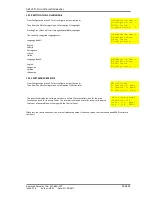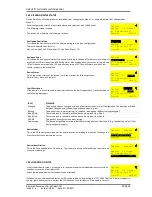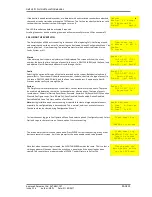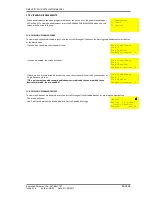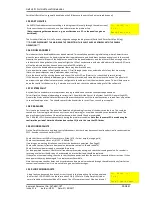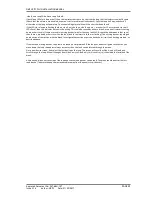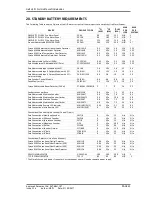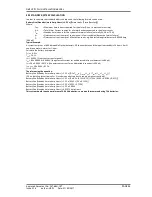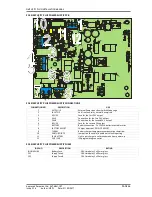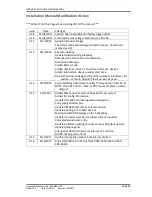
SIMPLICITY PLUS INSTALLATION MANUAL
Approved Document No: GLT.MAN-107
PAGE 42
Issue 3.16 Author: NRPJ Date: 21/09/2017
side B, and Loop2 Side A and Loop 2 side B.
If both loop LEDs for a loop are off, then this indicates that there is a short on the loop that the isolators couldn’t bypass.
(Check that the isolators are enabled, and aren’t set for a cable continuity check). Split the loop half way, and check if
either side of the loop will power up. Continue making more splits until the short has been found.
If the LEDs for a loop are flashing (both on, side A only, both on, side B only etc. – monitor for 12 or so seconds to see if
LEDs flash), then this indicates a break in the wiring. This could be caused by either a break, or a pair of isolators shutting
down a short circuit. If there are several missing devices (wait for the zone fault LED & check the addresses in that zone),
then there is probably a short circuit on the loop (look for isolators lit Yellow or flashing). The missing devices should give
an indication of the section with the break. Investigate that section as per the dead short circuit fault tracking method, as
described above.
If there are no missing devices, then there is probably a simple break. If the loop has been configured such that as you
move down the loop, the address always increases, then the fault can be located through the menu.
Go to view device screen. And select the first device on the loop. The screen will say either Side A only or Side B only.
Scroll through the loop. When it changes from Side A only to Side B only (or Vice versa), this should be the location of the
break.
Alternatively, disconnect one side of the loop and check which devices can be read. The break should be after the last
read device. (Take care to keep the removed cables away from the panels circuit boards.)


